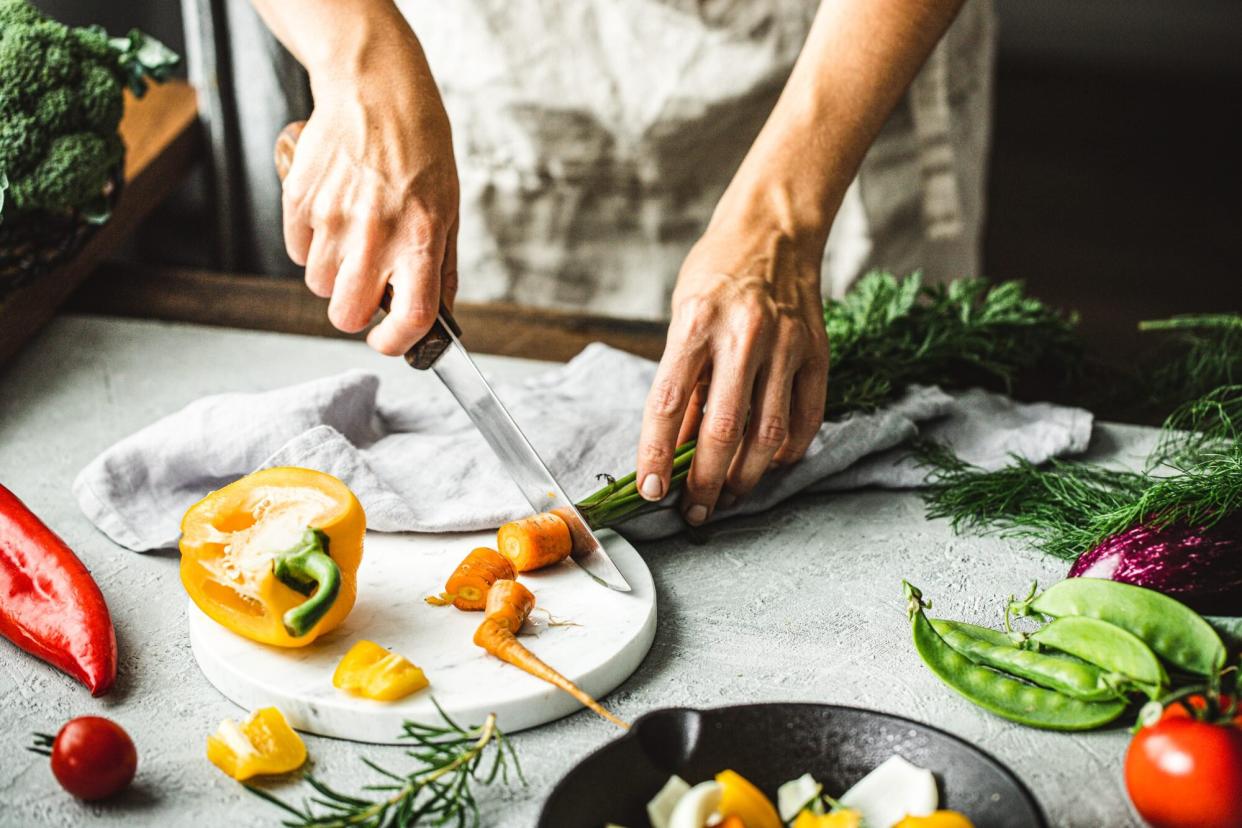How to Know If That Bruised or Partially Rotten Produce Is OK to Eat

alvarez / GETTY IMAGES
While frozen produce is a great option to have on deck for your cooking needs, there's nothing quite like shopping at your local market for the freshest fruits and vegetables. Anything from snacking to baking is made easy when you have produce readily available. But what to do when your precious fruits and vegetables become bruised or spoiled before you have a chance to enjoy them? We tapped experts to find out how you can tell when your past-peak produce is still safe to eat, along with tips on how to salvage the best parts to help prevent food waste.
Related: How to Choose Produce at the Farmers' Market or Grocery Store—Plus, Our Expert Storage Tips
How to Identify Bruised and Partially Rotten Produce
Bruised produce is pretty common, even at the market, says Patrick Ahern, a produce expert and the director of supply chain at Baldor Specialty Foods. "In a 3-pound bag of apples, you could find one or two, or even more, with a bruise from rubbing together or being banged about. (It's a good reason to buy loose fruit so you can inspect each piece.)," he says. "Likewise, drop a peach and it will bruise."
Bruised produce is pretty easy to spot. "It's that area of an otherwise shiny apple that appears flat and brown and looks like it would yield to your prodding finger," says Ahern. "A piece of bruised produce can still be eaten without issue, or you can cut off the bruised bit if you prefer."
Partially rotten produce can mainly be identified by the overall changes in texture, says Jamie Rhoden, a chef and mobile teaching kitchen operator at Harlem Grown, a non-profit urban farming organization in New York City. The quality is starting to deteriorate once it starts rotting, but it is still possible to consume at this stage.
Visible indications of rot include when the skin of the produce changes texture, or the fruit or vegetable starts to get mushy. For example, the skin of a potato may start to wrinkle and an avocado's interior and exterior will become excessively soft.
Another sign to look for is sprouting. "Sprouting produce in and of itself is not a sign of spoilage, but it does certainly warn you that time is running out and you need to work this into a meal sooner rather than later," says Ahern. "Onions, carrots, garlic, and potatoes can all be consumed when sprouting begins but if left they will start to decay pretty soon."
When to Toss Your Produce
Fully rotten produce will be slimy to the touch, heavily wrinkled, paler than its ripe color (yellow if previously green), sometimes moldy, and often accompanied by a foul smell, says Ahern. If you spot any of these common signs, your food is no longer safe (or tasty) to eat.
How to Salvage Past-Peak Produce
The experts recommend cutting away bruised or partially rotten parts of produce with a clean, sharp knife and then rinsing thoroughly under running water. Here are methods to utilize the parts that haven't spoiled.
Cook It
One of the best ways to repurpose your produce is to cook or bake with it, particularly if the texture has started to change, says Rhoden. For example, since tomatoes lose their crisp bite over time, she suggests using it to make a salsa or stew instead. And for bananas that are nearing a partially rotten state (think: black peel and soft texture), try using it in a smoothie or banana bread recipe. Bonus points for this method, as bananas are sweeter when they are past peak ripeness.
Freeze It
Consider freezing the salvageable pieces of bruised or partially rotten produce. "I think freezing is one of those underrated things that people don't realize is like your best friend," says Rhoden. While freezing won't necessarily stop the deterioration process, it does create a bit of a buffer period as you decide how you want to use the produce. For example, if you need frozen fruit to make a last-minute cocktail for a brunch, you can have that readily available in a pinch.
Compost Scraps
An eco-friendly way to use bruised or partially rotten produce is to compost it, a favorite method of Rhoden's. "I would never say throw it away, I would say compost, so that way, it goes back into the earth," she says. This is a money saver as well, since you are essentially allowing more produce to grow. If you don't have a compost bin in your home, Rhoden recommends using a local drop-off box or composting area.

